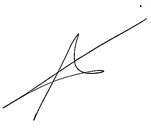MENTAL MAPS

“Learning how to learn is life’s most important skill.”
TONY BUZAN
An American investor once said to a man who gave him a thick dossier for a business: “I just believe in those ideas that fit on a business card’s reverse.”
When we make any project, whether for business or personal, it is important to represent what we intend in a simple way. Thus, what the British psychologist Tony Buzan has called Mind Mapping is a method to identify our desires and plan how to make them come true. These roadmaps have already been used by classical thinkers or even by the mystic Ramon Llull.
Buzan claims that the mind reads a note sheet globally, rather than linearly. That is why he developed a technique to visually represent the main theme and the different ideas or referrals as its branches.
A Treasure Map is a representation of an object that is very valuable to us. Especially if it is a difficult milestone to achieve, not having a plan of action, step by step, may make us abandon our purpose. Therefore, it is important to draw a plan, as drawing on our map roads that can lead us towards the goal, indicating both the different stages and also the dangers and difficulties of it can help us find our way.
When we do not know where to start, this technique not only helps us to find the way out, and guides us in these times of confusion, but make it easy for us to develop the necessary tools for the achievement.
The map of our mind
The Mind Map was created by Tony Buzan, author and educational consultant, to enhance mental abilities. His studies on information processing and the structure and functioning of neurons confirmed his theories and helped creating this tool for everyone.
The brain works both making associations and lineally: every word and image are associated with other combinations of words and images, and so on. By using the Mind Map we are following the pattern of thinking and learning and encouraging creativity, while it helps keep our brain active all because with the Mental Map we combine the activity of both hemispheres, left —for logic and ordering ideas— and right —generator of these ideas—.
Our mind is used to working with associations and can make them immediately, in fact. With this technique we offer an environment where we can express faster and more convenient than by using words or phrases, as our mind does not work schematically.
Brainstorming on paper
A Mind Map can be used together with brainstorming. They can be useful for developing new concepts, solving problems, taking up notes, studying for tests, memorizing stuff… There are thousands of possibilities to it.
To make a Mind Map, we only need a blank paper as large as possible, pencils, coloured chalk, different coloured post-it…
In the middle of the sheet we will write or draw the concept or idea, which must be clear and conspicuous. We may come up with this idea by asking ourselves the following questions: What are we looking for? What are our objectives? And our questions? We will reflect briefly on it and draw a circle around it, then.
Outside the circle we will draw or write other important ideas; We’d better not stop the process to think or to find a better word.
We must leave a blank space in case we may need to add something afterwards —a Mind Map is always open to change. We have to work fast and focused on what we are doing, reviewing it all, colouring the various issues and highlighting the most important ones.
We must continue to filling it in to the outside and go rolling out to the limits no matter where it takes us. There will come a time that development itself will stop us.
Once there, let us rest, leaving the map standing still for then reviewing it again. The map will be a document for learning and personal development that can be filed and used whenever we need it.
Using this technique we can represent and organize any problem or situation, issue or idea easily and spontaneously, and our brain can assimilate it as easily as it took us to draw, because it looks just a thought. Thus, our ideas are created, and they are connected and grow naturally, without barriers or boundaries. The Mind Map helps us to reflect on our situation in a relaxed, effortless way, and we can find solutions through the connection of the elements that are naturally linked with one another.
Our own Treasure Island
As children we imagined what we would be when we grew older, we played and fantasized with our home and family, with the car we would drive and if we would travel to exotic countries, but as we age we forget what it means to play and our dreams are buried at the bottom of our hearts, hovering head and sighing occasionally for them to get attention.
We never forget our desires, perhaps some change with age, but in ourselves there is a little voice that continues fantasizing about them. But why stop dreaming? Why not keep on playing? Why not drawing our own Treasure Map?
The Treasure Map is a technique and a ritual that helps us to focus on our thoughts and attention to the targets of interest. That is, we signal the way to what is valuable for us.
When drawing our goals and branches of them by using the Mind Map, our idea will materialize thanks to this previous envisioning, as we will be aware of what we have captured in the treasure map.
When we draw this treasure map, we should make sure it fills us up with energy and imagination. Definitely, it must be an invitation to think about ourselves and to define what our interests, activities, desires, goals are…
According to experts, the center of the treasure map should be a powerful image that represents our greatest desire with its branches. It is a collage, a mural that shows the steps toward our Treasure Island, the goal we have set to achieve.
During construction of the map we must act like children playing, as it is a ritual of renewal and change. When we draw our map, we are leaving behind our fears to start a new life.
When we contemplate it in the morning and before going to bed, we feel must feel our life is contained there. Everything we type onn the treasure map must be written on this, and we can leave some blank space to add something in the future. The drawing should be kept in a visible place until we have completed our path, and we can get rid of it.
However, all treasure maps should not be objects of contemplation, but triggers for action, as did our ancestors when drawing the pieces to collect in the caves.
Once we have a clear goal to follow, it will be time to make it happen.
Have a happy week.
Álex Rovira
P.S. This is an excerpt from the book ‘The Treasure Map’, by Álex Rovira and Francesc Miralles.


Para dejar un comentario en cualquiera de los artículos del blog deberás identificarte con tu perfil de usuario de Facebook y podrás decidir si quieres que se publique en el Sitio Web y además en tu muro de Facebook. SID & FORTUNE, S.L.U. es la Responsable del Tratamiento de tus datos, con la finalidad de moderar y publicar tu comentario con tu nombre. En ningún caso se publicará tu correo electrónico.
Tienes derecho de acceso, rectificación, supresión, limitación, oposición al tratamiento y portabilidad. Puedes ejercitar tus derechos en [email protected]. Más información en la Política de privacidad.